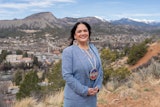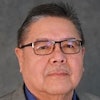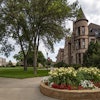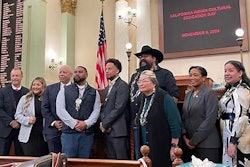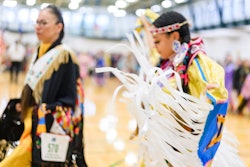Another Frame of Mind
By Mary Annette Pember
Through new center, SUNY professor leads effort to recognize, retain indigenous knowledge.
The SUNY College of Environmental Science and Forestry announced the creation this year of the Center for Native Peoples and the Environment, the first of its kind in the Northeast. According to its mission statement, the center will create programs that draw on indigenous and scientific knowledge to support the goals of environmental sustainability. The establishment of the center was announced last October at a teach-in at the college entitled, “Finding Common Ground: Indigenous and Western Approaches to Healing Our Land and Waters.” The event was co-sponsored by the Haudenosaunee Environmental Task Force and other community organizations.
The teach-in, according to Dr. Robin W. Kimmerer, director of the center, was a holistic effort to educate the general community about indigenous land rights issues, land stewardship and the environment. The Haudenosaunee have a long history of community involvement and activism relating to preserving the environmental health of the region. Often referred to as Iroquois by English speakers, the Haudenosaunee Nations include the Cayuga, Mohawk, Oneida, Onondaga, Seneca and Tuscarora tribes. The creation of the center was an evolutionary process spurred on by community and university interest, says Kimmerer, a professor of environmental and forest biology. The motivation was also partly personal.
Kimmerer’s family story is far from unique in Indian country. She says her grandfather, a member of the Citizen Potawatomi Nation, seldom spoke of his days at the Carlisle Indian school in Pennsylvania. Open from 1879 to 1918, the school was part of a government program in which American Indian youth were brought from their ancestral homes and “transformed” into “civilized” Americans. The Indian schools, run with military precision, stressed abandonment of traditional tribal ways and encouraged students to embrace Western knowledge and values.
“So much was taken from us,” Kimmerer says, adding that over time she began to wonder if there might be a way to give some of it back.
Using an approach called Traditional Ecological Knowledge, or TEK, which Kimmerer describes as a “way of knowing,” the center is working to bring an American Indian mindset into the scientific conversation. She says TEK is deeply empirical and is based on long-term observation. But because it incorporates spiritual and cultural elements, TEK has often been dismissed by Western scientists. But the work of established scholars is beginning to lend credibility to the approach.
Kimmerer says TEK had an early intuitive influence on her life. As a child, she was always interested in plants. She spent a great deal of time in the woods with her parents, who shared their knowledge of the forest with her. They taught her to value and respect the gifts that plants offer humanity. That interest inspired her to study botany in college. She recalls, however, being surprised by the reductionist, mechanical approach of science. Mainstream botany viewed plants as subjects rather than persons and focused on how they worked rather than valuing their gifts. “This was my first major disconnect” in relation to her studies, she says.
Mainstream science largely ignored TEK, and as Kimmerer learned more about scientific problem solving, she says it seemed important to bring these two approaches together.
“Solutions to complex ecological problems require not only scientific expertise but also understanding of the cultural context in which they occur,” says the center’s Web site. It also points out that American Indian land holdings in North America contain more wild lands than that of all the national parks and the Nature Conservancy combined. According to the Web site, since federal agencies are required by law to consult with tribes regarding land use, natural resource policy and other issues, it’s important for the mainstream scientific community to have an understanding of indigenous cultures and their approaches to environmental thinking. “Our graduates have a high probability of encountering issues involving TEK,” say officials at the school.
The first course in the center, “Indigenous Issues and the Environment,” is a cross-cultural look at global climate change, biotechnology, treaty rights and forestry. The students will learn about the indigenous and mainstream perspectives to these issues through use of case histories, says Kimmerer.
The center includes an advisory board of environmental leaders from the Haudenosaunee communities and indigenous educators from around the country. In addition to contributing ideas for curriculum, the board will help establish priorities for the center, such as fund raising and community outreach efforts. The center is also developing partnerships with K-12 institutions and American Indian environmental organizations, and offers scholarships to Haudenosaunee students through the Haudenosaunee Scholar Award program.
“We have the proximity to the Haudenosaunee and the interest of the community and the university,” Kimmerer says.
“It seemed like the right time to bring these two ways of knowing together.”
© Copyright 2005 by DiverseEducation.com
